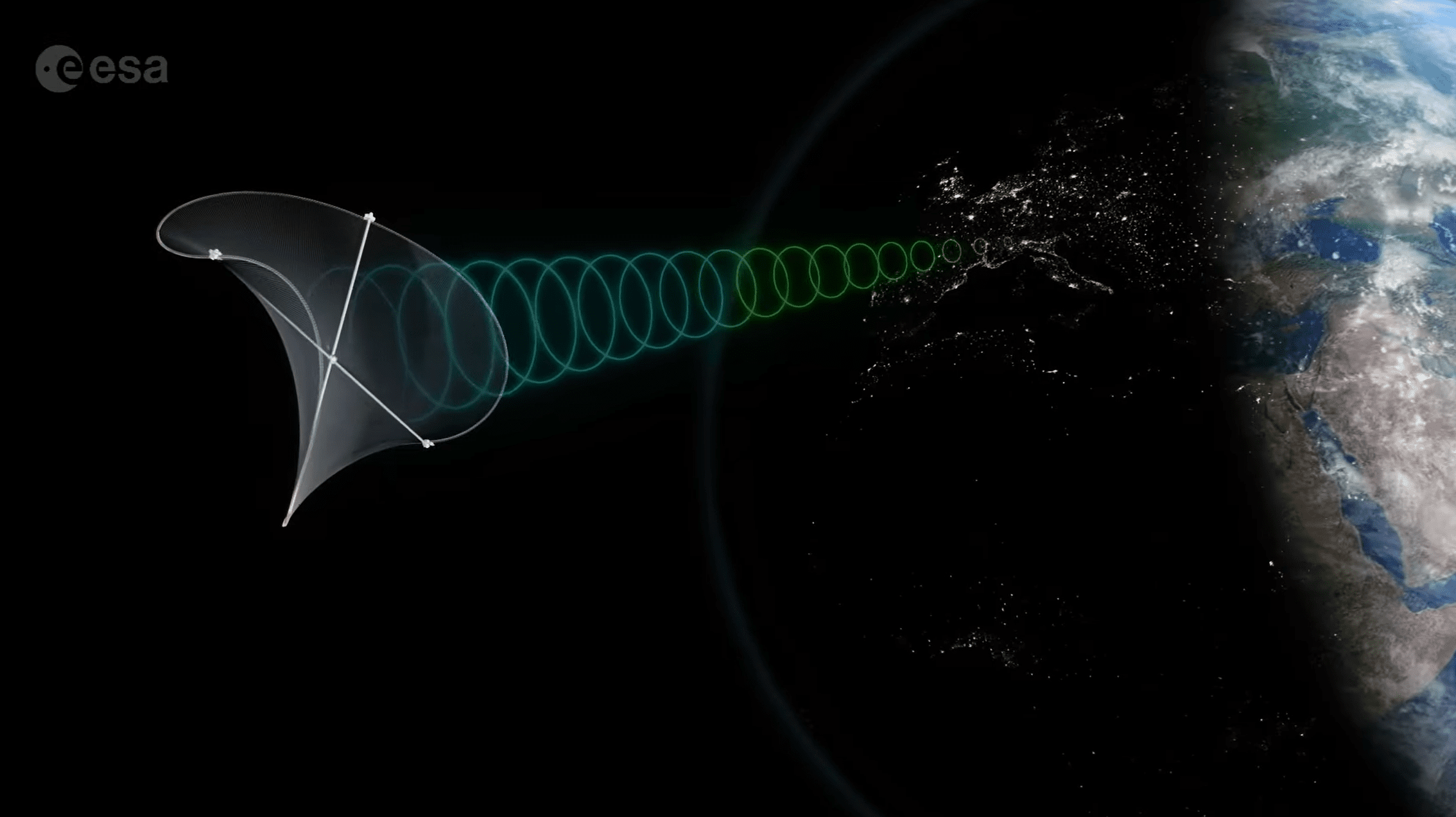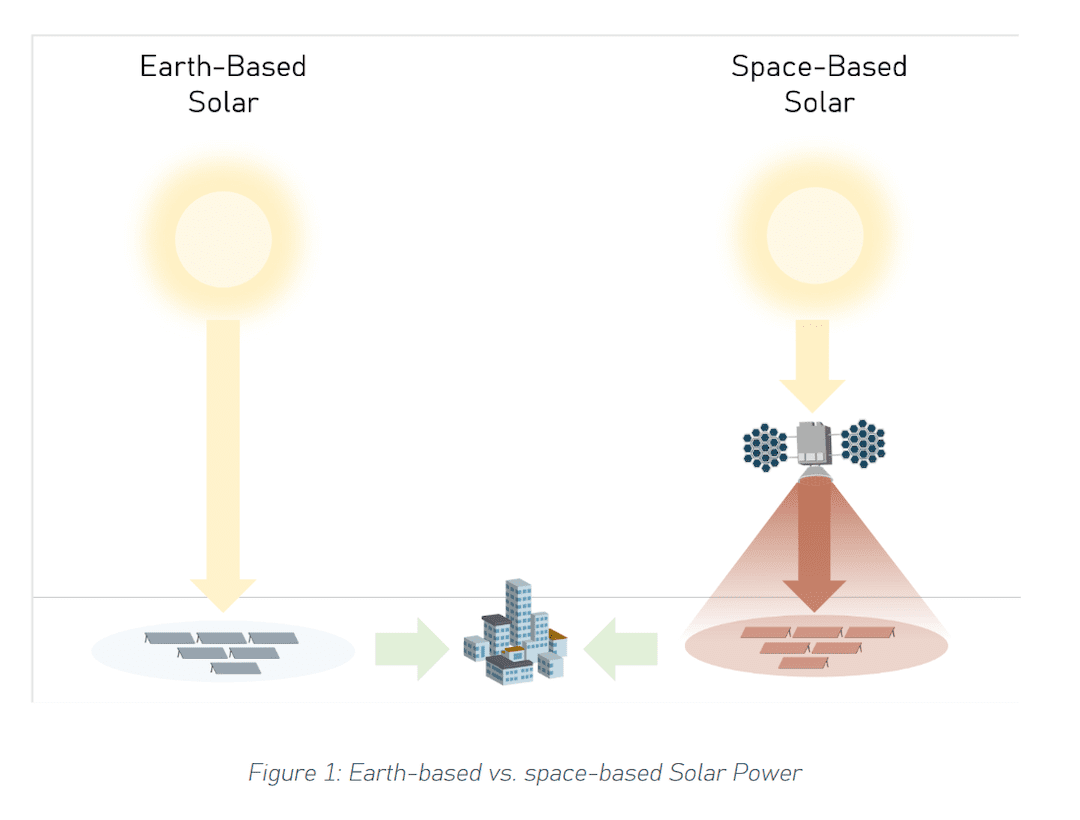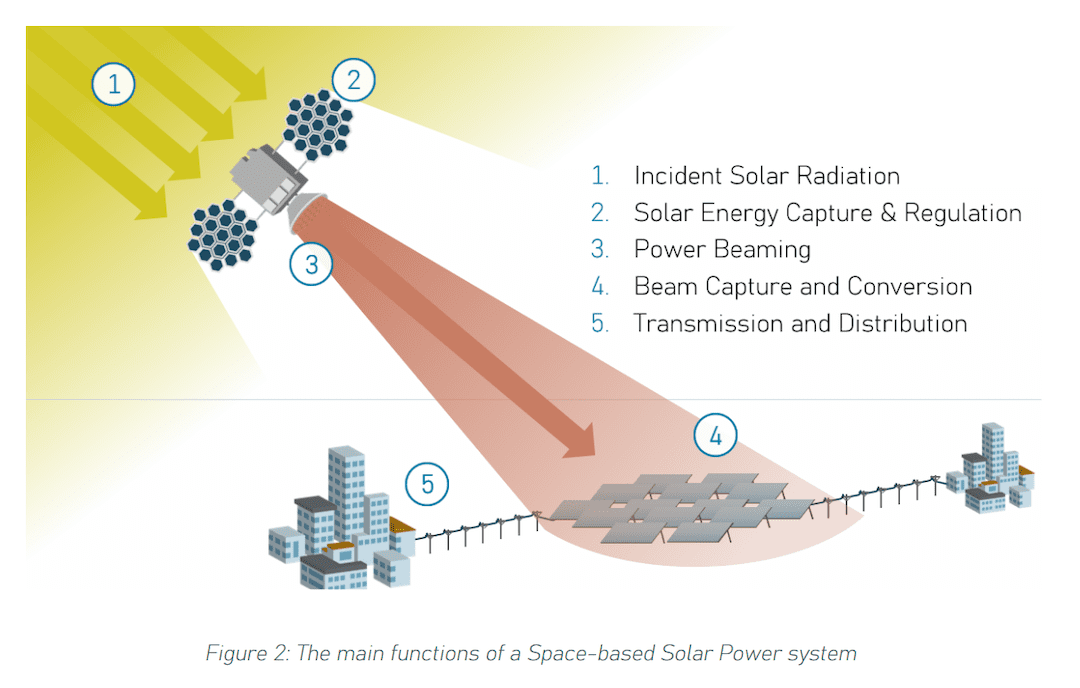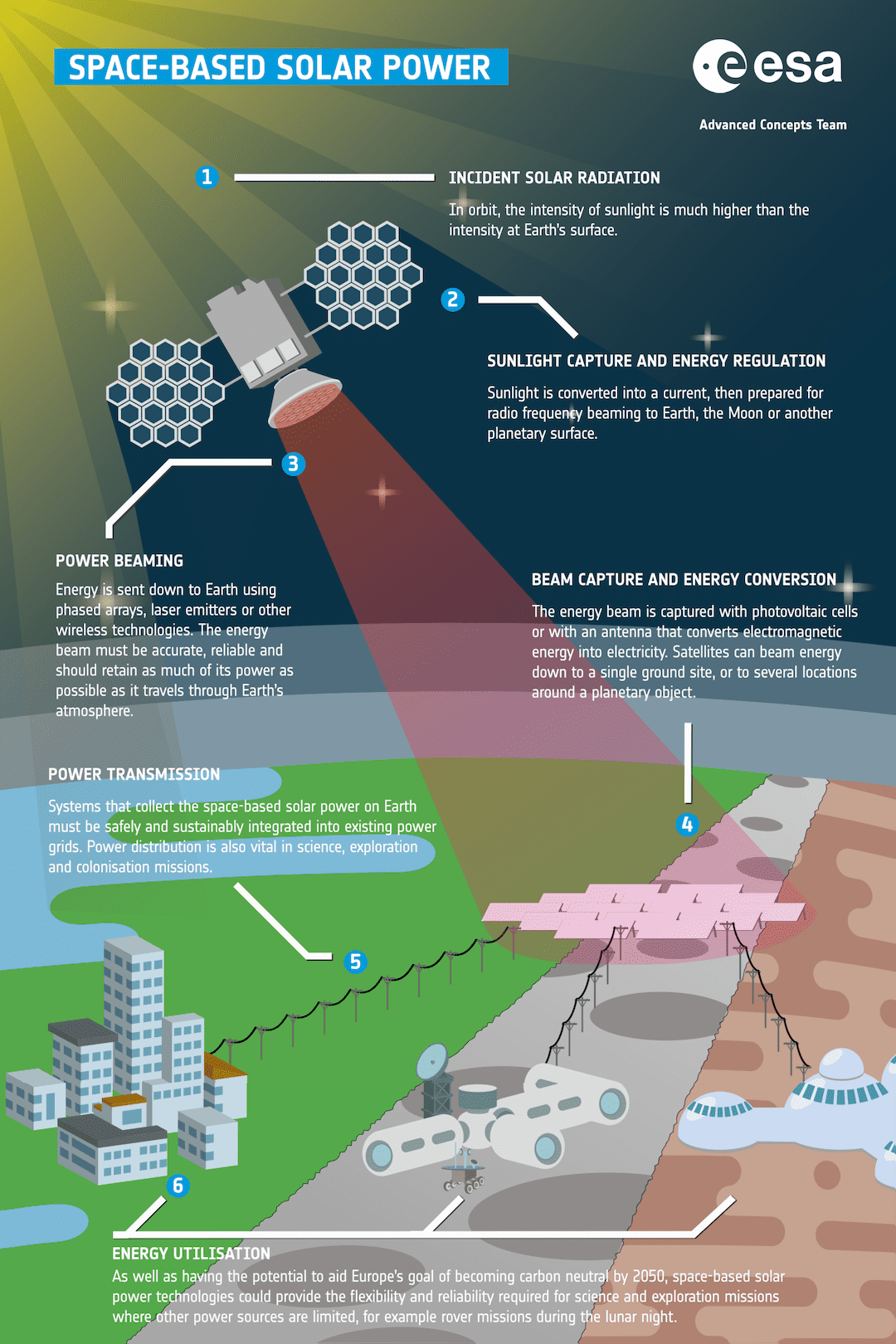At the Council of ESA Member States in November, the ESA will present the Solaris programme, with which it will create the preparatory bases for a constellation of Giant satellites that will collect solar energy in space to send it wirelessly to Earth In order to partially cover European energy needs.
The system was dubbed by the European Space Agency “Space-Based Solar Power”, which can be translated as “solar from space”, because the basic concept is to collect solar energy from large satellites equipped with special panels and then wirelessly redistribute it down to Earth. The European Space Agency aims to have the Solaris Space Solar Program (SBSP) ready by 2025.
Europe consumes about 3000 TWh of electricity annually, and the European Union, in the scenario presented in 2020, has estimated that in 2050 this need will increase to 3,500 TWh. To accelerate the goal of achieving zero emissions by 2050 set by the European Union and obtaining greater energy independence on the continent, the European Space Agency (ESA) will propose an SBSP to accelerate the implementation of these two scenarios, and in this regard, commissioned Two independent studies to understand the quality of the investment.
Up to 25 satellites twice the size of the International Space Station orbiting Earth
According to analysis firm Roland Berger, in the solar energy harvest phase On Earth, a large proportion of incoming solar energy (55%-60%) is lost along the path through the atmosphere Because of the effects of reflection and absorption. In contrast to terrestrial systems, SBSPs have the advantage of collecting solar energy in space, which results in a higher accumulation rate due to the lack of a diffused atmosphere and a longer collection time due to the presence of a solar collector in orbit.
Each SPSB satellite will have a maximum surface area of more than 15 square kilometres, will have a mass of at least 6,000 tons and will be in geosynchronous orbit 36,000 kilometers from Earth to point permanently in the same direction after the period of our location’s rotation. planet and It is irradiated by the Sun for 99% of its orbit.
For size reference, one satellite will have 16 times the mass and 2 times the surface of the International Space Station.
Given that the SpaceX spacecraft promises a 100-ton payload (for a low orbit, though), For each SPSB satellite, a minimum of 60 launches will be required with this load available.

Each satellite has a capacity of 2 gigawatts and produces about 15.7 TWh per year. To meet about 10% of the EU’s total electricity demand for 2050 of about 3,500 TWh, 20-25 SBSP satellites will be needed It operates with a total annual electricity production of 314-390 TWh. According to research by the British company Frazer-Nash, the potential instead of 800 TWh per year because it predicted twice the number of satellites in orbit, about 50.
Two solutions have been identified for transmitting energy from space to Earth wirelessly: radiofrequency radio waves (2.45 GHz) to a ground rectifier, or energy transfer via high-energy laser light to photovoltaic cells. Installed on the ground.

On Earth, it receives straight energy from space, and consists of multiple dipole antennas, It must cover an area of more than 71 square kilometres.
According to Roland Berger, the total cost of building the first example of the SPSB satellite is between €8.1 billion and €33.4 billion in the worst case scenario, which nonetheless saves up to 20 years for the realization of wireless technology. Solar transmission. The total cost of the system for 30 years of operation is a maximum of €31.1 billionBut the target cost is between 7.5 billion and 9.9 billion euros.
On the other hand, Fraser-Nash estimated the total cost of 54 satellites by 2070 at 418 billion euros. In return for the benefits derived from SPSB amounting to 601 billion euros.
Advantages of SPSB
By having a continuous source of solar energy in space, the SPSB . system There will be no risk of running intermittent renewable energy sources (such as hydropower or wind power). Recently there has been an energy crisis due to the lack of renewable energy sources in Australia drought in Asia It brings China to its knees.
So it will not be exposed to ground weather conditions It will give stability to the power grid while reducing carbon emissions from gas and oil instead.
SBSP will be an efficient production technique from the point of view of land consumption,
It will only use 5 square meters of land per megawatt hourmuch lower than most alternatives.
There will be less fluctuations in energy prices in Europe, as the continent’s energy independence will increase. There will be implications for research and technology development.
Because it’s not that simple
In this huge project, the analysis companies consider that the achievement of SPSB It will require a 200-fold increase in teleportation capacity compared to today (Frazer Nash). Given that, given current limitations, it could take 4-6 years to send a single satellite into orbit.
Roland Berger also focuses on wireless power transmission to Earth technology, which he expects will have the longest development period along with assembly operations (maximum 20 years).
The efficiency of wireless power transmission over very long distances using radio frequency has not yet been demonstrated. The US Naval Research Laboratory is currently testing transmission at the kilowatt level across 1.6 kilometers of microwave frequencies. Ground trials have shown returns of up to 55% for short distances.

In fact, the actual yield of solar energy from space must also be taken into account. If the atmosphere loses about 45% of what would normally reach the Earth, It is necessary that a person who was launched from space does not have great losses Not only in terrestrial transmission but also in photon-to-electron conversion.
How much land does Italy need for solar energy from space?
Looking at our country, according to Frazer-Nash, the emerging land required for SBSP rectennas per MWh in Italy (4.2 m²/MWh) is much lower than that required for PV (13-22 m²/MWh) or onshore wind (99 m²). sq/mWh). It has also already identified about 1,600 suitable locations for possible Rectennas headquarters in Italy.
Credits cover photo: Andreas Treuer

“Internet trailblazer. Travelaholic. Passionate social media evangelist. Tv advocate.”








More Stories
12 out of 20 regions do not guarantee basic levels
Watch the real video of the probe's descent to Titan (more than 1.3 billion kilometers from Earth)
Europe weather. Late in the cold, the polar vortex is affected by the stratiform trend of March «3B Meteo